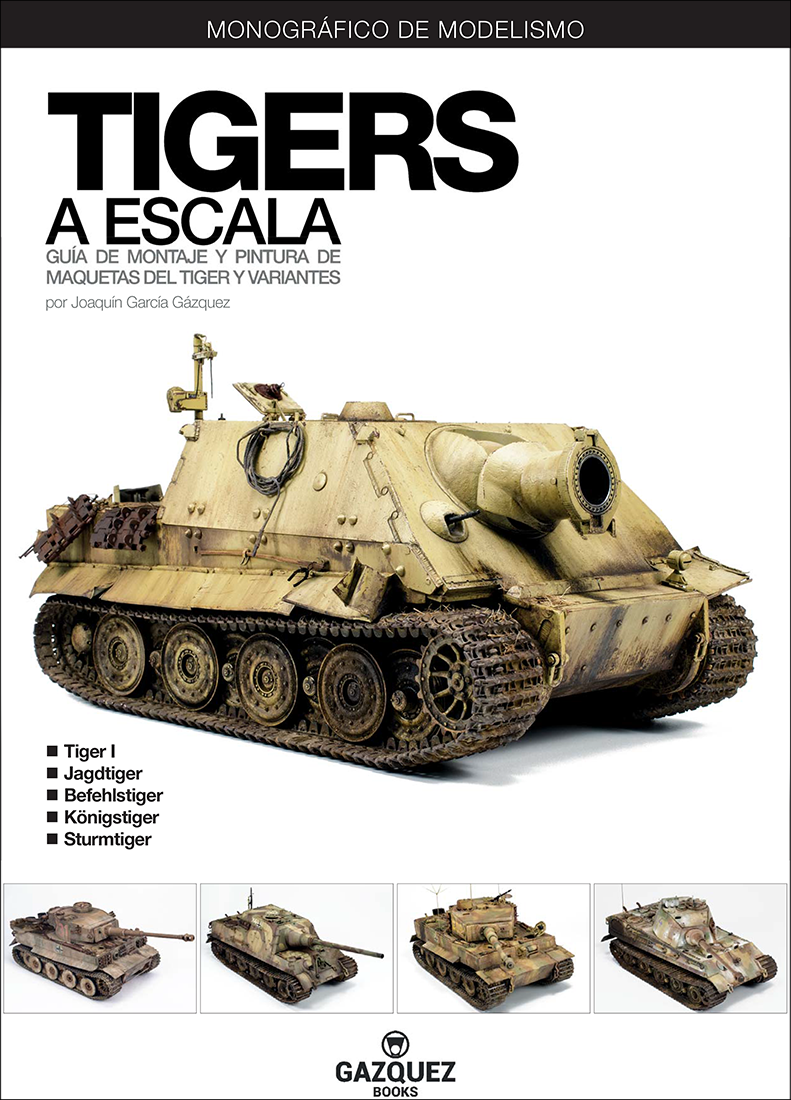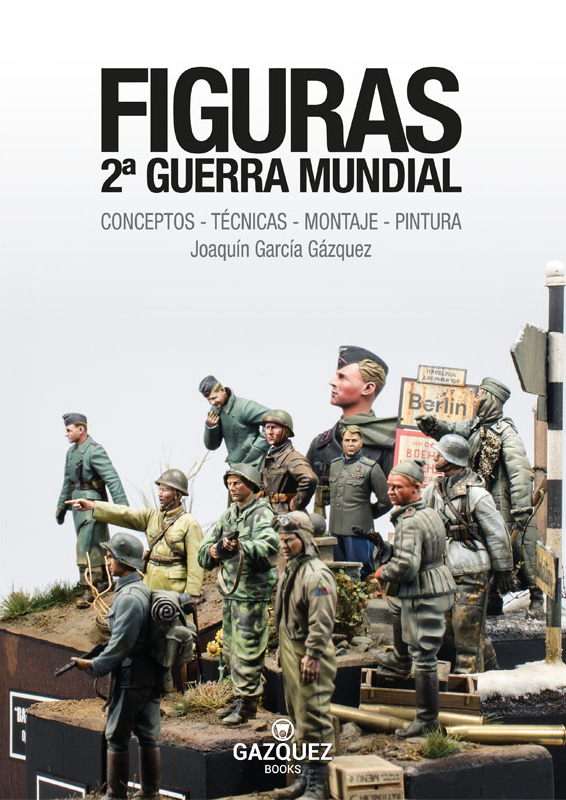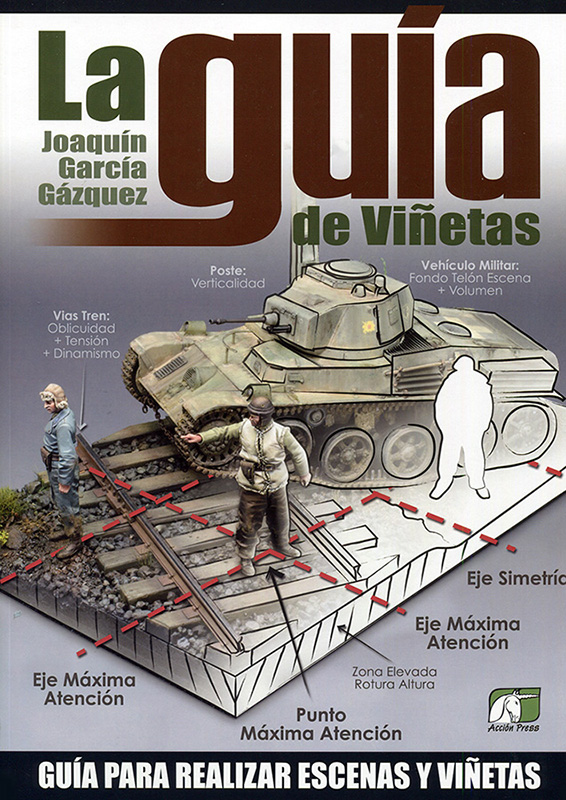Categoría: Gallery
Maldshiy Serzhant, Eastern Front 1944
Type 2 «Ka-Mi», Battle of Leyte Gulf 1944
SS Grenadier, Hungary 1945.
Por fin algo de tiempo y calma para poder tomar unas fotos finales del SS Grenadier en Hungría a principios de 1945.
Impresionante la figura de Alpine Miniatures, lenguaje corporal y escultura excepcional, todo ello rematado con un moldeado y una calidad de la resina de primera calidad, hacen de esta miniatura una auténtica delicia.
Está pintada con acrílicos, aunque en la Parka blanca, me ayude de remates y últimos toques de blanco con oleos.
Para la suciedad tambien utilicé óleos terrosos y pigmentos.
La base es de 3.5*3.5 cm., nieve de Euromodelismo, poste de un pincho de madera, y carteles de Verlinden, y el superior autoimpreso a partir de una fotografía.
Agradecer al maestro Jose Hernández, la ayuda para llevar a buen fin esta miniatura.
Espero os guste.
Finally some time and calm to take a few pictures of the SS Grenadier in Hungary early 1945.
Exceptional the Alpine Miniatures figure, outstanding body language and sculpture, all completed with a casting and resin first quality, make this miniature a true delight.
It’s painted with acrylic paints, although in the white Parka, I used also white oil color for the final touches.
For the dirt I also used earth oils and pigments.
The base is 3.5*3.5 cm, Euromodelismo snow, a wooden spike post, and posters by Verlinden, and the top is self-printed from a photograph.
I would like to thank to Jose Hernandez for his help in bringing this miniature to a successful conclusion.
I hope you like it.
Galería Panzer 38(t)
En el ámbito de las Bellas Artes, se denomina estudio, al boceto preparatorio para una obra pictórica o escultórica, esta maqueta se puede decir, que es un «Estudio de Maqueta».
Creo que con lo anterior ya está clara la intención que tenía cuando la hice, esto servirá para un futuro modelo a 1/35, más preparado y trabajado. La idea es realizar un ensuciado y empolvado «asimétrico», en las largas y extenuantes cabalgadas de la Blitzkrieg, en las primeras etapas de la 2ª G.M., las Panzertruppen alemanas, realizaban grandes avances rápidos que desconcertaron a las fuerzas a las que se enfrentaban.
Un carro, podia avanzar en un dia 40-50 o incluso más kilómetros en columna por un camino, comiéndose el polvo de los carros que iban delante de el. ¿Como se ensuciaría en ese caso en vehículo? La respuesta es obvia, la parte frontal estaría prácticamente cubierta de polvo, y el resto con menor intensidad.
Intentar reproducir ese efecto, es el estudio que he llevado a cabo en este modelo, con la intención de repetirlo en otro a escala 1/35 mas adelante.
Con la idea en la mente clara, habia que elegir una maqueta para el estudio, para esto la escala «bastarda» 1/48, resulta ideal, montaje rápido, encaje extraordinario típico de Tamiya, se monta en 2 tardes (literalmente), y decoración en Gris Panzer, excelente para contrastar con polvo y tierra acumulada.
A destacar que me estrené con los colores AK Real Colors, que me han parecido excelentes, el resto procesos típicos, para desgaste y envejecimiento.
Las fotografías están tomadas con fondo blanco para resaltar al máximo el modelo, tomar fotos con este fondo es un poquito más difícil, pero con los ajustes precisos el resultado es excelente.
Espero os guste.
When we talk about Fine Arts, a study is the sketch of a pictorial or sculptural work. Then we can say this model is a » Study of Model «.
I think the intention was clear when I did this model. It will serve for a more prepared and hard worked future model in1/35 scale. The idea is to make a dirty and dusty «asymmetric» weathering, in the long and gruelling Blitzkrieg «horseback rides» in the first stages of WW2. German Panzertruppen realized big fast forward that they disconcerting the enemy forces.
An AFV can advance 40-50 or even more kilometres a day., getting dirt with dust of previous vehicles that were going in front of it. How it would get dirty in this case? The response is obvious: the frontal part would be practically covered of dust and dirt, and the rest with minor intensity.
To try to reproduce this effect, it is the study that I did on this model, with the intention of repeating it later on another 1/35 model.
With a clear idea in mind, I must to choose a model for the study. For this, the «bastard» scale 1/48 turns out to be ideal, rapid assembly, Tamiya’s extraordinary typical fits. It’s mounted during 2 evenings, and decoration in Grey Panzer, excellent to contrast with dust and accumulated earth.
I musts say that I used for the first time Ak Real colors on this, which have seemed to me to be excellent. The rest are typical weathering processes.
White background stands out to the maximum the model on the pictures. Taking photos with this background it’s a bit more difficult, but with the precise adjustments the result is excellent.
I hope you like it.
BRDM-2
Valentine MK.IV, «Lend & Lease», «Kutuzov»
Soviet Tank “Leitenant», Alpine with Hornet Head, 1/35.
Oberleutnant 116th Panzer Division “Windhund”, Alpine Miniatures 1/16
This is my first bust, for me it was a very difficult work but very inspiring. It must to change some concepts and the way to paint, over all I must to do a natural finish, no forced lights and shadows. I hope you like it.
Este es mi primer busto, un trabajo difícil pero muy edificante. Ha sido necesario cambiar algunos conceptos y la forma de trabajar, sobre todo he intentado darle un acabado natural, nada de luces y sombras forzadas. Espero os guste.
Pasión por las Figuras: «Soviet Mladshiy Serzhant» terminado.
¿Por qué Pasión por las Figuras?, sencillamente porque tienen algo especial, algo tan especial como ver que se le da vida a una miniatura.
No, efectivamente, no soy pintor de figuras puro, solo pinto para poder hacer figuras aceptables para mis vehículos y escenas, pero esto me da para ser consciente del porque tanta gente, ama y disfruta tanto pintando figuras, que algo tan pequeño finalmente parezca que tenga vida, conseguir que tenga personalidad y transmita, es algo realmente especial.
Esta figura, con las carencias y fallos que tiene, son varios y notorios, ha sido muy especial para mí, ha servido para cambiar mi visión, mi técnica y mi forma de pintar, está hecha con colores artísticos de la máxima calidad, tanto en acrílico como en oleo, mezclando colores básicos en la paleta como haría un pintor de cuadros.
La ventaja es que la pureza del pigmento, permite unos colores más nítidos y vividos, contrariamente a lo que parece mezclar colores es muy sencillo, más de lo que nos imaginamos, os aseguro que simplemente es documentarse un poco y ponerse a la labor.
Contrariamente a lo que parece, esto lo simplifica todo, ya no hay 40 botes de pintura en la mesa, simplemente dos paletas, una de oleos y otra de acrílicos, no más de 10 – 15 puntos de pintura, con los colores dispuestos, estos se guardan
Básicamente la técnica es muy sencilla, bases acrílicas aerográficas, y luego trabajar con los óleos luces y sombras, no hay mas, la riqueza cromática obtenida es fantástica, cada mezcla es ligeramente diferente, paradójicamente, con menos colores la variedad tonal se incrementa.
Esta figura simplemente, me ha servido para poner en práctica toda esta teoría y perfeccionar la técnica, para mí, se ha abierto un camino nuevo y diferente.
No sería justo dejar de mencionar a Andrés Bernal y a Jose Hernández, por las conversaciones y ayuda que me han brindado para obtener esto.
Sin más unas fotos de la figura, con sus numeroso fallos, que espero en próximas subsanar.
Pronto más.
Why passion for figures? Simply because they have something special… so special that they can bring a miniature to life.
No, I am not a true figure painter, I only paint suitables figures for my vehicles and scenes, but I realize why so many people love and enjoy painting figures with it. Giving personality and living appearance to something so little is really outstanding.
This figure, with its several mistakes, has been very special to me. It has been useful to change my view and painting technique. It is made with premium artistic acrylics and oils, mixing basic colours on a palette as a canvas painter would do.
The purity of the pigment is the main advantage and with it we can obtain clearer and vivider tones. Mixing them is not such difficult as we can expect. The only necessary thing are some documents about this method and trying it.
Different from it seems, it simplifies all. There are not 40 paint bottles yet on the table. Only two pallets, one for acrylics and other for oils, and 10-15 colours. Also, we can save them for another painting session.
Basically, it is a very easy technique. Airbrushing acrylics bases and then lighst and shades with oils. That is all. The obtained colour range is amazing so each mix is quite different from another. Paradoxically, the less colours we use the more colour range we obtain.
As I have already told, this figure has been usefull to me to try this theory and to improve the technique. A new and different pathway has been opened to me.
This would be unfair not to name Andrés Bernal and Jose Hernández for the conversations and help that they have provided me to achieve this discovery.
Finally, there are some pics of the figure, with its mistakes I hope solve soon.
More soon.





















